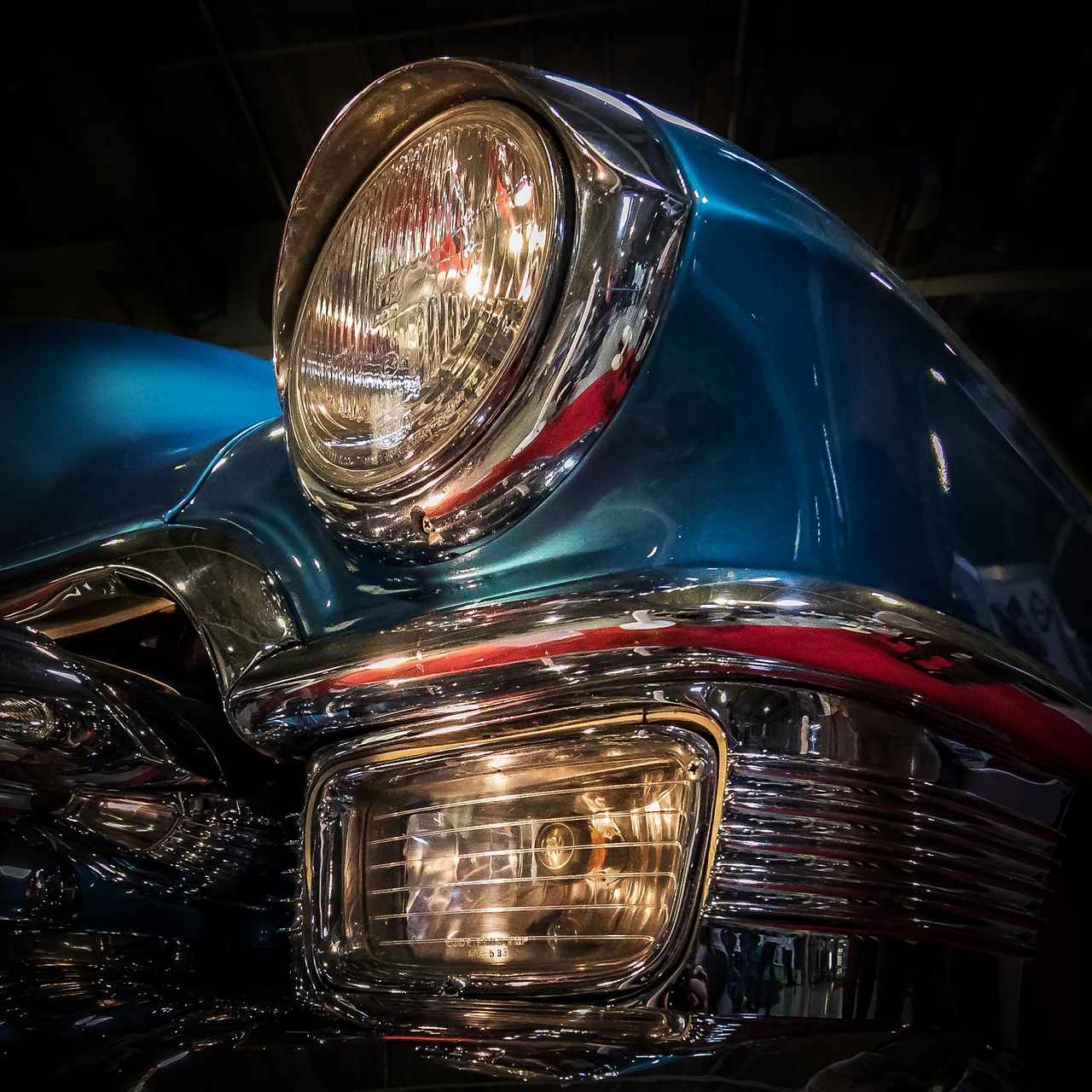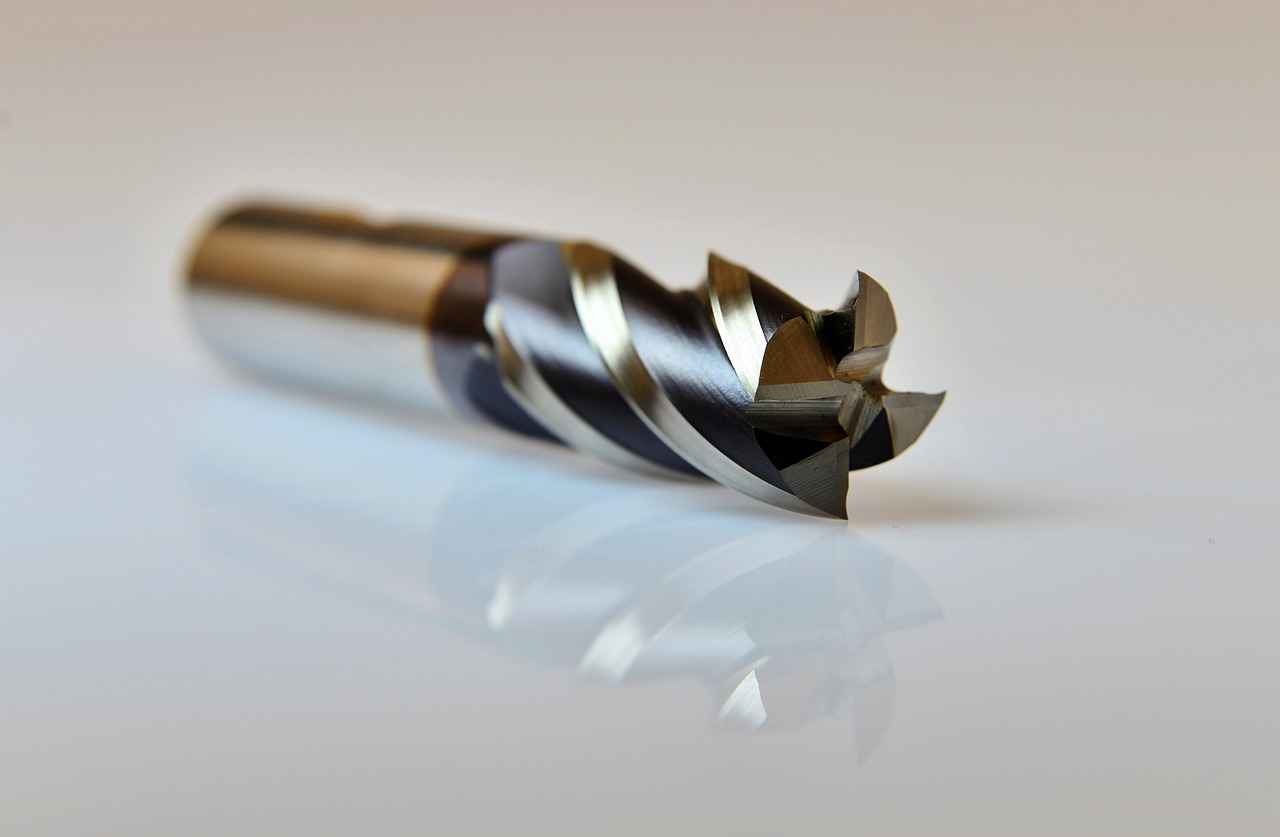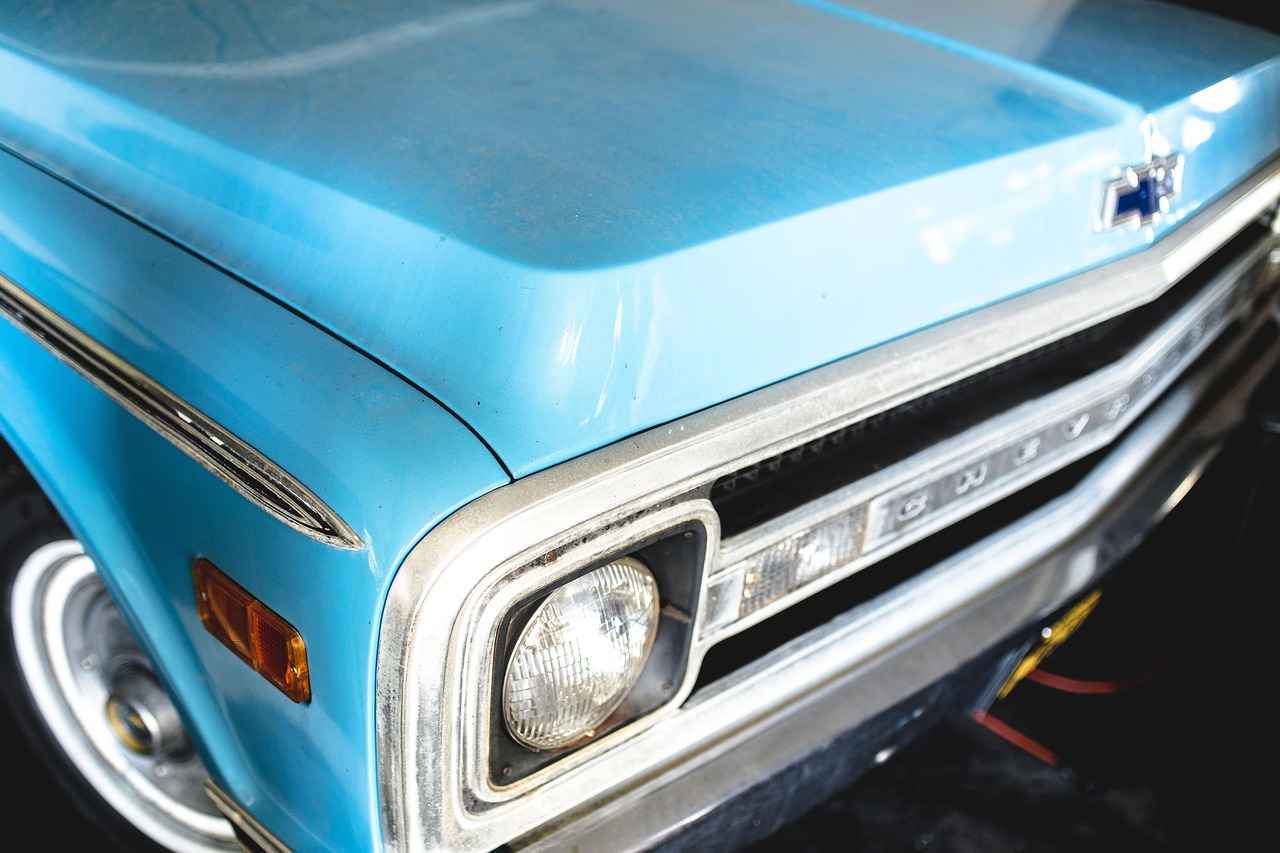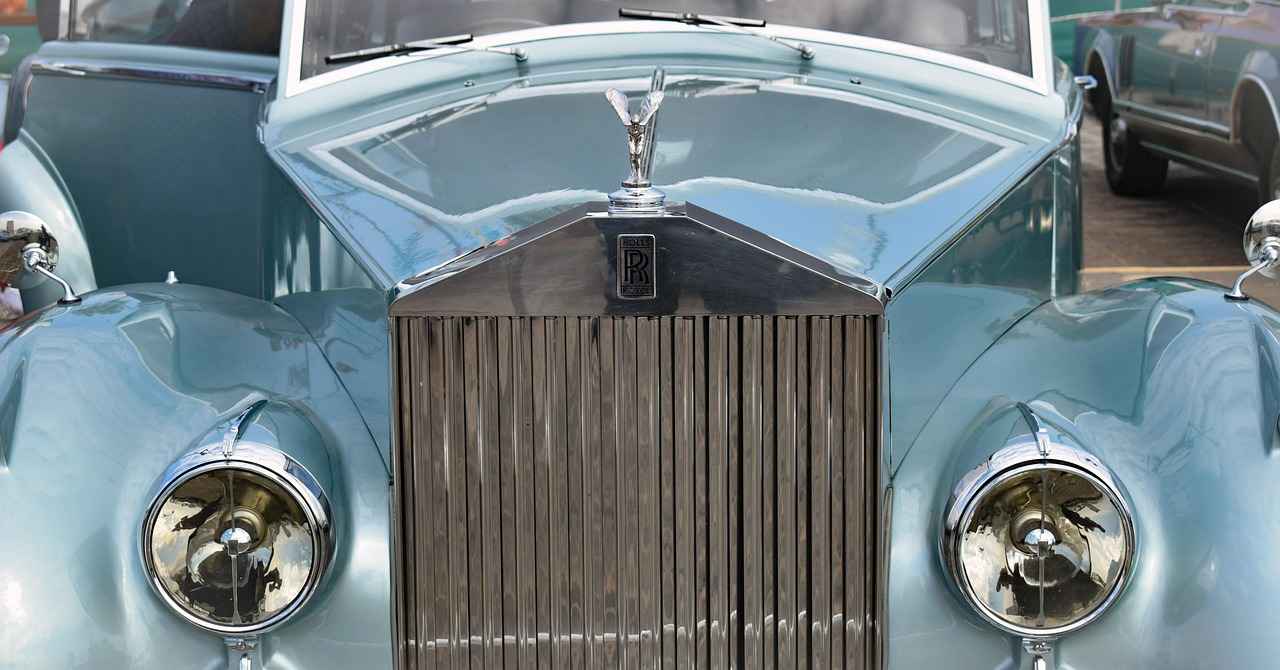This article provides a step-by-step guide on changing a headlight bulb in a Honda Accord, ensuring safety and clarity while enhancing your vehicle’s visibility on the road. Properly functioning headlights are crucial for safe driving, especially during nighttime or adverse weather conditions.
Understanding the importance of headlight maintenance can significantly enhance road safety. Dimming or burnt-out bulbs can lead to reduced visibility, increasing the risk of accidents. Regularly checking your headlights can prevent unexpected failures and ensure you are always prepared for the road.
Before starting, gather the necessary tools to make the process smooth. Common tools include:
- Gloves – to protect your hands and prevent oils from your skin from getting on the bulb.
- Screwdriver – to remove any screws or panels obstructing access to the headlight assembly.
- Replacement bulb – ensure it is specific to your Honda Accord model.
Choosing the right bulb is crucial. Consult your owner’s manual or check online resources to find the specific bulb type for your Honda Accord’s model year. This ensures compatibility and optimal performance.
Follow these detailed steps to ensure a successful headlight bulb change:
Ensure your vehicle is parked on a level surface and turn off the engine. Open the hood and secure it with the prop rod for safety while you work.
Locate the headlight assembly at the front of the vehicle. Depending on the model, you may need to remove a cover or panel to access the bulb. This may involve unscrewing a few screws or unclipping a panel.
Carefully disconnect the wiring harness from the old bulb. Turn the bulb counterclockwise to release it from the socket, taking care not to touch the glass with bare hands, as this can cause premature failure of the new bulb.
Insert the new bulb into the socket, turning it clockwise until it is secure. Reconnect the wiring harness, ensuring it clicks into place for proper electrical contact.
Being aware of common pitfalls can save you time and frustration. Avoid:
- Touching the bulb with your fingers, as the oils can create hot spots and lead to failure.
- Forcing the bulb into the socket, which can damage both the bulb and the assembly.
After installation, it’s essential to test the new bulb. Start your vehicle and turn on the headlights to confirm that the new bulb is functioning correctly. If it doesn’t illuminate, double-check the connections and ensure the bulb is properly seated.
If you encounter difficulties or if the new bulb does not illuminate, it may be time to consult a professional mechanic. They can diagnose electrical issues or other underlying problems that may not be immediately apparent.
Regular maintenance can extend the life of your headlights. Clean the lenses and check the bulbs periodically to ensure optimal performance and safety on the road. Additionally, consider using a UV protectant on the lens to prevent clouding.
By following these steps and tips, you can efficiently change a headlight bulb in your Honda Accord, ensuring a safer driving experience and maintaining your vehicle’s functionality.

Why Do You Need to Change Your Headlight Bulb?
When it comes to vehicle safety, headlight maintenance is often overlooked. However, understanding why you need to change your headlight bulb can significantly enhance your overall road safety. Dimming or burnt-out bulbs can lead to reduced visibility, which in turn increases the risk of accidents. In this article, we will explore the importance of headlight maintenance and why timely bulb replacement is essential for every driver.
Ignoring headlight maintenance can have serious consequences. Poor visibility during nighttime or adverse weather conditions can make it difficult to see pedestrians, road signs, and other vehicles. According to the National Highway Traffic Safety Administration (NHTSA), approximately 50% of all traffic fatalities occur at night, despite less traffic. This statistic underscores the critical role that functioning headlights play in ensuring safety.
Dimming bulbs do not provide adequate illumination, which can lead to dangerous driving conditions. As headlights dim over time, drivers may find it challenging to see the road clearly, especially in poorly lit areas. This can result in delayed reactions to obstacles or sudden changes in traffic, increasing the likelihood of accidents.
Replacing headlight bulbs promptly not only ensures better visibility but also contributes to the overall safety of your vehicle. A clear, bright headlight allows you to see further down the road and be seen by other drivers. Furthermore, many states have laws requiring functional headlights; failing to comply can lead to fines or penalties.
- Flickering Lights: If your headlights flicker, it may indicate a failing bulb.
- Dim Lights: Noticeably dimmer lights compared to when they were new suggest it’s time for a replacement.
- Burnt-Out Bulbs: If one of your headlights is completely out, it’s essential to replace it immediately.
Regular maintenance is key to ensuring your headlights function optimally. It is advisable to check your headlights at least once a month and after any long trips. Additionally, whenever you have your oil changed or routine maintenance performed, ask your mechanic to inspect your headlights as well.
Yes, it can! Investing in headlight maintenance can prevent costly accidents and potential injuries. Moreover, replacing bulbs proactively can save you from more extensive electrical issues that may arise from using faulty lights. Keeping your headlights in good condition can also enhance the resale value of your vehicle.
When selecting replacement bulbs, consider the following:
- Type: Ensure you choose the correct bulb type for your vehicle model.
- Brightness: Opt for bulbs that provide adequate brightness without blinding oncoming drivers.
- Longevity: Look for bulbs that offer a longer lifespan to reduce the frequency of replacements.
In conclusion, understanding the importance of headlight maintenance is crucial for safe driving. By being proactive about changing your headlight bulbs, you can significantly enhance your visibility on the road and reduce the risk of accidents. Regular checks and timely replacements will not only keep you safe but also contribute to a more enjoyable driving experience.

What Tools Do You Need for the Job?
Changing a headlight bulb in your Honda Accord is a straightforward task that can be accomplished with the right tools and preparation. In this section, we will discuss the essential tools you need for the job, ensuring that your headlight replacement process is smooth and efficient.
Before you begin the process of changing your headlight bulb, it is crucial to gather all necessary tools. Having everything at your fingertips will not only save time but also make the task less frustrating. Below is a list of common tools you should consider:
- Gloves: Wearing gloves is essential to protect your hands and prevent oils from your skin from getting on the new bulb, which can cause it to burn out prematurely.
- Screwdriver: A flathead or Phillips screwdriver may be required to remove screws or clips that secure the headlight assembly or cover.
- Replacement Bulb: Ensure you have the correct replacement bulb specific to your Honda Accord model. Refer to your owner’s manual or trusted online resources to find the right type.
- Towel or Cloth: A soft cloth can be useful for cleaning the headlight lens before installing the new bulb, ensuring maximum visibility.
- Flashlight: If you’re working in low light conditions, a flashlight will help you see the components clearly and avoid any mishaps.
Having the right tools not only makes the process easier but also enhances your safety while working on your vehicle. Here’s a closer look at why each tool is important:
1. Gloves: Protects your hands and keeps the bulb clean.2. Screwdriver: Necessary for accessing the headlight assembly.3. Replacement Bulb: Vital for restoring your vehicle's lighting.4. Towel or Cloth: Ensures the headlight is clean for optimal performance.5. Flashlight: Provides visibility in dark conditions.
Once you have gathered your tools, it’s time to prepare your vehicle for the headlight bulb change. Make sure your car is parked on a flat surface and the engine is turned off. Opening the hood and securing it with the prop rod will give you the access you need to work safely.
In conclusion, having the right tools is a key step in successfully changing the headlight bulb in your Honda Accord. By ensuring you have gloves, a screwdriver, a replacement bulb, a towel, and a flashlight, you will be well-prepared to complete the task efficiently. This preparation not only helps in maintaining the functionality of your vehicle but also enhances your safety on the road.

How to Identify the Correct Replacement Bulb?
When it comes to ensuring your Honda Accord is road-ready, identifying the correct replacement bulb is essential. Not only does the right bulb enhance visibility, but it also contributes to overall safety while driving. Below, we provide an in-depth guide to help you navigate this process effectively.
Choosing the correct bulb type is crucial for several reasons:
- Safety: Using the wrong bulb can lead to inadequate lighting, increasing the risk of accidents.
- Compatibility: Different models and years of the Honda Accord require specific bulb types; using the wrong one can damage the headlight assembly.
- Performance: The right bulb ensures optimal brightness and longevity, enhancing your driving experience.
To identify the correct replacement bulb for your Honda Accord, you can:
- Consult Your Owner’s Manual: This is the most reliable source. Your manual will provide detailed specifications for bulb types.
- Check Online Resources: Websites like manufacturer sites or auto parts retailers often have tools to help you identify the right bulb based on your vehicle’s model year.
- Visit Auto Parts Stores: Many stores have knowledgeable staff who can assist you in finding the correct bulb.
Depending on the model year, Honda Accords typically use one of the following bulb types:
- Halogen Bulbs: Common in older models, these bulbs are affordable and easy to replace.
- Xenon (HID) Bulbs: Found in newer models, these provide brighter light but can be more expensive.
- LED Bulbs: An increasingly popular option, they last longer and consume less power.
Once you have identified the bulb type, it’s important to double-check:
- Visual Inspection: Compare the new bulb with the old one to ensure they match in size and shape.
- Check the Wattage: Make sure the wattage is the same as specified in your owner’s manual to avoid electrical issues.
- Read the Packaging: Ensure that the packaging clearly states compatibility with your Honda Accord model.
If you find yourself uncertain about the correct bulb type, consider these options:
- Ask a Mechanic: A professional can provide expert advice and ensure you purchase the right bulb.
- Join Online Forums: Communities of Honda Accord owners can offer insights and recommendations based on their experiences.
In conclusion, taking the time to identify the correct replacement bulb for your Honda Accord is vital for maintaining safety and functionality. By consulting your owner’s manual, utilizing online resources, and seeking assistance when needed, you can ensure that your vehicle remains in optimal condition.

Step-by-Step Guide to Changing the Bulb
Changing a headlight bulb may seem like a daunting task, but with the right guidance, it can be a straightforward process. This step-by-step guide will help you navigate through the procedure efficiently, ensuring that your Honda Accord remains safe and visible on the road.
Follow these detailed steps to ensure a successful headlight bulb change. Proper technique will help avoid damage to your vehicle and ensure the new bulb functions correctly.
- Step 1: Prepare Your Vehicle
- Step 2: Access the Headlight Assembly
- Step 3: Remove the Old Bulb
- Step 4: Install the New Bulb
- Step 5: Test the New Bulb
Before you begin, make sure your vehicle is parked on a level surface and the engine is turned off. Open the hood and secure it with the prop rod to prevent it from closing while you work. This is crucial for safety.
Locate the headlight assembly at the front of your vehicle. Depending on your model year, you may need to remove a cover or panel to gain access to the bulb. Carefully consult your owner’s manual for specific instructions related to your model.
Disconnect the wiring harness from the old bulb by gently pulling it away. To remove the bulb, turn it counterclockwise. Be cautious not to touch the glass part of the bulb with your fingers, as oils from your skin can create hot spots and shorten the bulb’s lifespan.
Take your new bulb and insert it into the socket. Turn it clockwise until it locks securely in place. Reconnect the wiring harness, ensuring that it clicks into position, which confirms proper electrical contact.
After installation, it’s essential to test the new bulb. Start your vehicle and turn on the headlights to ensure the new bulb is functioning correctly. If it doesn’t light up, check the connections and ensure everything is secure.
Being aware of common pitfalls can save you time and frustration. Here are some mistakes to avoid:
- Touching the Bulb: Always avoid touching the glass part of the bulb with your fingers.
- Not Securing Connections: Ensure that the wiring harness is properly connected to avoid electrical issues.
- Forgetting to Test: Always test the new bulb before closing the hood to confirm it is working.
If you encounter difficulties during the process, or if the new bulb does not illuminate after installation, it may be time to consult a professional mechanic. They can help diagnose any underlying electrical issues that may be affecting your headlights.
Regular maintenance can extend the life of your headlights. Clean the lenses periodically to remove dirt and grime that can diminish brightness. Additionally, check the bulbs regularly to ensure they are functioning properly, which will enhance your safety on the road.
Step 1: Prepare Your Vehicle
When embarking on the task of changing a headlight bulb in your Honda Accord, the first and most crucial step is to prepare your vehicle. This preparation not only ensures your safety but also sets the stage for a smooth and efficient bulb replacement process.
Proper vehicle preparation minimizes risks and enhances efficiency. Parking on a level surface prevents any accidental rolling, which could lead to injuries or damage. Additionally, turning off the engine eliminates the risk of electrical shocks and ensures that you are not exposed to harmful fumes while working.
- Find a Suitable Location: Look for a flat, stable area to park your vehicle. Avoid slopes or uneven ground to maintain control over the vehicle.
- Turn Off the Engine: Once parked, make sure to switch off the engine completely. This is vital for your safety and prevents any electrical issues while you work.
- Open the Hood: After ensuring the engine is off, open the hood of your Accord. This will provide you with access to the headlight assembly.
- Secure the Hood: Use the prop rod to secure the hood in an upright position. This is a critical safety measure, as it prevents the hood from accidentally closing while you are working underneath it.
In addition to the steps above, consider the following safety measures:
- Wear Protective Gear: It’s advisable to wear gloves to protect your hands from dirt and grease, as well as safety glasses to shield your eyes from any debris.
- Keep Tools Handy: Before starting, gather all necessary tools like screwdrivers and the replacement bulb to avoid interruptions during the process.
- Check Surroundings: Ensure the area around your vehicle is clear of obstacles and bystanders to prevent accidents.
Being aware of common mistakes can enhance your preparation process:
- Avoid Working in Poor Lighting: Make sure your workspace is well-lit. Poor visibility can lead to mistakes or accidents.
- Do Not Rush: Take your time to prepare adequately. Rushing can lead to oversights that may compromise your safety.
By following these preparation steps and taking necessary precautions, you set yourself up for a successful headlight bulb replacement. Remember, proper preparation is key to ensuring both your safety and the effectiveness of your vehicle maintenance tasks.
Step 2: Access the Headlight Assembly
In the process of changing a headlight bulb in your Honda Accord, accessing the headlight assembly is a crucial step. This section will guide you through the necessary actions to locate and reach the assembly effectively.
To begin, you need to locate the headlight assembly, which is typically situated at the front of your vehicle. This assembly houses the headlight bulb and is designed for easy access, though the exact method may vary depending on the model year of your Honda Accord.
Depending on your specific model, you may find that you need to remove a cover or panel to gain access to the bulb. Here’s a detailed breakdown of the steps involved:
- Open the Hood: Start by parking your vehicle on a level surface and turning off the engine. Open the hood and secure it with the prop rod to ensure safety while you work.
- Locate the Headlight Assembly: The headlight assembly is usually found on the left or right side of the front end of the vehicle. It is identifiable by the lens cover that protects the bulb.
- Remove Any Obstructions: In some models, you might encounter a plastic cover or a panel that needs to be removed. This cover can typically be unscrewed or unclipped. Use a screwdriver if necessary to remove screws.
Accessing the headlight assembly properly is essential for several reasons:
- Avoid Damage: Incorrect handling of the assembly can lead to damage, which may require costly repairs.
- Efficiency: A clear understanding of how to access the assembly allows for a quicker and more efficient bulb replacement process.
- Safety: Ensuring that the assembly is accessed correctly minimizes the risk of electrical issues or short circuits that could arise from improper handling.
Here are some tips to keep in mind when accessing the headlight assembly:
- Always refer to your owner’s manual for specific instructions related to your model year.
- Use gloves to protect your hands and avoid getting oils from your skin on the new bulb.
- Keep a flashlight handy to illuminate the area, especially if visibility is low.
By following these guidelines, you can ensure that you successfully access the headlight assembly without any complications. This step is vital in the overall process of changing your headlight bulb, leading to a safer driving experience.
Step 3: Remove the Old Bulb
Changing a headlight bulb in your Honda Accord is an essential skill that every car owner should possess. is critical to ensuring that your vehicle’s lighting system functions optimally. In this section, we will go through the detailed process of safely removing the old bulb, which is vital for a successful replacement.
To begin, it is crucial to carefully disconnect the wiring harness from the old bulb. This step is important because it prevents any electrical shorts or damage to the wiring. Gently grasp the connector and pull it straight out without twisting or bending it, as this can cause damage to both the harness and the bulb socket.
Next, you will need to remove the old bulb from its socket. To do this, turn the bulb counterclockwise. This action will help to release it from the socket securely. It is essential to handle the bulb carefully during this process. Always remember to wear gloves or use a cloth to avoid touching the glass part of the bulb with your bare hands. This is because oils and dirt from your skin can create hot spots on the glass, leading to premature bulb failure.
After you have successfully turned the bulb and released it from the socket, gently pull it out. If you encounter any resistance, double-check that you have turned it the correct way and that there are no clips or additional fasteners holding it in place.
Once the old bulb is removed, take a moment to inspect the socket for any signs of damage or corrosion. If you notice any issues, it is advisable to address them before installing the new bulb. Cleaning the socket with a soft cloth can help ensure a good connection for the new bulb.
In summary, removing the old bulb involves a few essential steps: disconnecting the wiring harness, turning the bulb counterclockwise, and pulling it out gently. By following these instructions carefully, you will set yourself up for a smooth installation of the new bulb.
In the next step, we will discuss how to properly install the new bulb and ensure it is secure and functioning correctly.
Step 4: Install the New Bulb
In this section, we will delve into the crucial . Proper installation of your new headlight bulb is essential for ensuring optimal performance and safety on the road. Follow these detailed instructions to make the process as smooth as possible.
Once you have successfully removed the old bulb, it is time to install the new one. Begin by taking your new bulb out of its packaging, making sure to handle it with care. It is important to avoid touching the glass part of the bulb with your fingers, as the oils from your skin can cause it to burn out prematurely.
To insert the new bulb into the socket, align it properly with the grooves or tabs designed for this purpose. Carefully push the bulb into the socket, ensuring it fits snugly. Once the bulb is in place, turn it clockwise until you feel it secure. This motion locks the bulb into the socket, preventing it from becoming loose while driving.
After securing the bulb, the next step is to reconnect the wiring harness. Take the wiring harness and position it over the connector on the back of the bulb. Press down firmly until you hear a click, indicating that the harness is properly connected. This connection is critical for ensuring that the bulb receives the electrical current needed for illumination.
It is advisable to double-check that the wiring harness is firmly attached. A loose connection can lead to flickering lights or a complete failure of the new bulb. If you encounter resistance while connecting the wiring harness, do not force it; instead, re-examine the alignment and ensure that no debris is obstructing the connection.
Once you have installed the new bulb and reconnected the wiring harness, it is time to test your work. Before closing the hood, start your vehicle and turn on the headlights. This step will confirm that the new bulb is functioning correctly. If the bulb does not illuminate, recheck the installation steps to ensure everything is securely in place.
In conclusion, installing a new headlight bulb in your Honda Accord is a straightforward task when done correctly. By following these steps, you can ensure that your headlights are functioning properly, enhancing your visibility on the road and contributing to safer driving conditions.

Common Mistakes to Avoid
When changing a headlight bulb in your Honda Accord, being aware of common mistakes can significantly enhance your experience and save you both time and frustration. Below are some crucial pitfalls to avoid, ensuring a smooth replacement process.
One of the most common mistakes is touching the bulb with your fingers. The oils from your skin can create hot spots on the glass when the bulb is illuminated, which may lead to premature failure. To prevent this, always wear gloves or use a clean cloth when handling the new bulb.
Another frequent error is not ensuring that the bulb is seated properly in the socket. If the bulb is not securely in place, it may flicker or fail to illuminate altogether. Always double-check that the bulb is inserted correctly and turned clockwise until it is snugly fitted.
Before starting the replacement process, it’s essential to disconnect the battery. This simple step can prevent electrical shocks and ensure safety while you work on the headlight assembly. Make it a habit to always disconnect the negative terminal before any electrical work on your vehicle.
In some Honda Accord models, the headlight assembly is covered by a protective panel. Forgetting to remove this cover can lead to unnecessary frustration and delays. Make sure to carefully inspect the area and remove any obstructions before attempting to access the bulb.
After installing the new bulb, it’s crucial to test it before reassembling everything. Start your vehicle and turn on the headlights to ensure the bulb is functioning correctly. This step can save you from having to redo the entire process if the bulb is faulty or improperly installed.
Each Honda Accord model may have specific instructions regarding headlight bulb replacement. Ignoring the owner’s manual can lead to mistakes in identifying the correct bulb type or installation process. Always refer to the manual for guidance tailored to your specific vehicle.
Using the wrong tools can complicate the process and potentially damage your vehicle. Ensure you have the appropriate tools, such as a screwdriver and gloves, before starting the replacement. This preparation will help you work efficiently and effectively.
Finally, one of the biggest mistakes is rushing the process. Take your time to ensure each step is done correctly. Hurrying can lead to oversights, such as forgetting to reconnect the wiring harness or not securing the bulb properly, which can result in further issues down the line.
By being mindful of these common mistakes, you can change your headlight bulb efficiently and effectively. Remember, a well-lit headlight not only enhances your visibility on the road but also contributes to overall safety.

How to Test Your New Headlight Bulb?
When you have successfully installed a new headlight bulb in your Honda Accord, the next critical step is to ensure that it is functioning properly. Testing your new headlight bulb is essential for both your safety and the safety of others on the road. Here’s a detailed guide on how to effectively test your new headlight bulb.
Testing your headlight bulb is not just a formality; it is crucial for several reasons:
- Safety: Properly functioning headlights are vital for visibility during nighttime driving and in adverse weather conditions.
- Legal Compliance: Many regions have laws requiring vehicles to have operational headlights.
- Preventative Maintenance: Early detection of issues can prevent more significant electrical problems in your vehicle.
Follow these steps to ensure your new headlight bulb is working correctly:
- Start Your Vehicle: Begin by starting your Honda Accord. This ensures that the electrical system is active and ready for testing.
- Turn on the Headlights: Activate the headlights using the switch, typically located on the steering column or dashboard. Make sure to set them to the appropriate setting (low beam or high beam) based on your needs.
- Check for Illumination: Stand in front of your vehicle and visually inspect the headlights. Both bulbs (if applicable) should illuminate brightly. If one or both fail to light up, you may need to recheck your installation.
- Inspect the Beam Pattern: Ensure that the light beams are correctly aligned and not pointing too high or low. Misalignment can reduce visibility and dazzle oncoming drivers.
- Test Additional Functions: If your vehicle has additional headlight features, such as daytime running lights or automatic high beams, test these as well to confirm they function as intended.
If your new headlight bulb does not illuminate after testing, consider the following troubleshooting steps:
- Check the Connection: Ensure that the wiring harness is securely connected to the bulb. A loose connection can prevent power from reaching the bulb.
- Inspect the Fuse: A blown fuse can cause the headlight to malfunction. Refer to your owner’s manual to locate the headlight fuse and check its condition.
- Examine the Bulb: Confirm that the bulb is not defective. If you suspect it might be, replace it with another new bulb to see if that resolves the issue.
- Consult a Professional: If all else fails, it may be time to seek help from a qualified mechanic. They can diagnose any underlying electrical issues that might be affecting your headlights.
Testing your new headlight bulb is a straightforward yet vital step in ensuring your vehicle’s safety and functionality. By following the outlined steps, you can confirm that your headlights are working correctly, providing you with peace of mind as you drive. Regular maintenance and testing of your vehicle’s lighting system can enhance your overall driving experience and ensure compliance with safety regulations.

When to Seek Professional Help?
When it comes to vehicle maintenance, particularly with something as crucial as your headlights, knowing when to seek professional help can save you time, money, and frustration. While changing a headlight bulb may seem like a straightforward task, there are instances where the issue may extend beyond a simple bulb replacement.
What Signs Indicate You Need a Mechanic?
- Persistent Flickering: If your new headlight bulb flickers or dims intermittently, this could indicate a deeper electrical issue.
- Multiple Bulbs Burned Out: If both headlights fail around the same time, it may not just be a coincidence but a sign of a faulty wiring harness or a blown fuse.
- Corrosion or Damage: Upon inspection, if you notice corrosion on the bulb socket or damaged wiring, it’s essential to consult a professional to avoid further complications.
- Unusual Noises: If you hear popping or crackling sounds when operating your headlights, this could suggest an electrical short or other serious problems.
Why Consult a Professional Mechanic?
Professional mechanics have the expertise and tools to diagnose complex electrical issues that the average vehicle owner may overlook. They can perform detailed inspections, ensuring that all components related to your headlights are functioning correctly. This includes checking the battery, fuses, and wiring integrity.
Understanding Electrical Issues:
Electrical systems in vehicles can be intricate. If your headlights are not functioning properly, it may not just be the bulb that’s at fault. A mechanic can utilize diagnostic tools to pinpoint the problem quickly. They can test the voltage and current flow, checking for any irregularities that could indicate a malfunctioning alternator or battery.
Cost Considerations:
While it may be tempting to troubleshoot and fix the issue yourself, consider the potential costs of misdiagnosis. A professional mechanic can save you money in the long run by accurately diagnosing the issue and preventing further damage to your vehicle.
When DIY Isn’t Enough:
Even if you are comfortable performing basic maintenance tasks, some situations warrant professional assistance. For example, if you’ve replaced the bulb and it still doesn’t work, it could be a sign of a more serious problem. In such cases, attempting further repairs without the right knowledge can lead to more significant issues down the line.
Conclusion:
In summary, while changing a headlight bulb is often a manageable task, understanding when to seek professional help is crucial. If you experience persistent issues, unusual symptoms, or if the problem extends beyond the bulb itself, consulting a qualified mechanic is the best course of action. This proactive approach not only ensures your safety on the road but also maintains the longevity of your vehicle’s electrical system.

Maintaining Your Headlights for Longevity
Maintaining your vehicle’s headlights is essential for ensuring safety on the road. Regular maintenance not only extends the lifespan of your headlights but also improves visibility during nighttime driving and adverse weather conditions. In this section, we will explore practical tips for keeping your headlights in optimal condition.
- Regular Cleaning: Over time, dirt, grime, and oxidation can accumulate on your headlight lenses, leading to diminished brightness. To clean them, use a mixture of baking soda and water or a specialized headlight restoration kit. Gently scrub the lenses with a soft cloth or sponge to remove buildup.
- Inspecting Bulbs: Periodically check your headlight bulbs for signs of wear and tear. If you notice a dimming effect or flickering, it may be time to replace the bulbs. Always consult your vehicle’s manual for the correct bulb type.
- Adjusting Headlight Aim: Misaligned headlights can cause glare for oncoming traffic and reduce your visibility. Regularly check the aim of your headlights and adjust them if necessary. This can typically be done using a screwdriver and following the manufacturer’s guidelines.
- Protective Coatings: Consider applying a UV-resistant protective coating to your headlights after cleaning. This can help prevent future oxidation and yellowing, keeping your headlights clear and bright.
In addition to these maintenance tips, it is crucial to be aware of environmental factors that can impact your headlights. For instance, exposure to harsh weather conditions such as rain, snow, and extreme temperatures can accelerate wear. Parking in shaded areas or using a car cover can help mitigate these effects.
Why is Headlight Maintenance Important? Dull or malfunctioning headlights can significantly impair your visibility while driving, especially at night. This can increase the likelihood of accidents. By taking the time to maintain your headlights, you not only enhance your safety but also that of other road users.
Furthermore, keeping your headlights in good condition can save you money in the long run. Replacing bulbs and cleaning lenses is far less expensive than dealing with the consequences of an accident caused by poor visibility.
In summary, regular maintenance of your headlights is a simple yet effective way to enhance road safety and extend the life of your vehicle’s lighting system. By following these tips, you can ensure that your headlights remain bright and effective for years to come. Always remember to check your headlights regularly and address any issues promptly to maintain optimal performance.

Conclusion
Changing a headlight bulb in your Honda Accord is a task that can significantly enhance your driving safety and comfort. Not only does it improve visibility during nighttime or inclement weather, but it also helps maintain your vehicle’s functionality. In this guide, we will walk you through the essential steps and tips to ensure a smooth and efficient headlight bulb replacement.
Understanding the significance of headlight maintenance is crucial for every driver. Dimming or burnt-out bulbs can severely reduce visibility on the road, increasing the risk of accidents. Regularly checking your headlights can prevent unexpected failures and ensure you are always prepared for any driving conditions.
- Gloves: To keep your hands clean and avoid any oil from your skin touching the bulb.
- Screwdriver: Depending on your model, you may need this to remove any covers or panels.
- Replacement Bulb: Ensure you have the correct bulb type for your specific Honda Accord model.
Choosing the right bulb is essential for proper functionality. You can find the specific bulb type needed by consulting your owner’s manual or visiting reliable online resources. This step is critical to avoid any compatibility issues.
Follow these detailed steps to ensure a successful headlight bulb change:
Start by parking your vehicle on a level surface and turning off the engine. Open the hood and secure it with the prop rod to ensure safety while you work.
Locate the headlight assembly at the front of your vehicle. Depending on the model year, you may need to remove a cover or panel to access the bulb.
Carefully disconnect the wiring harness from the old bulb. Turn the bulb counterclockwise to release it from the socket, being cautious not to touch the glass with your bare hands, as this can cause damage.
Insert the new bulb into the socket and turn it clockwise until it is secure. Reconnect the wiring harness, ensuring it clicks into place for proper electrical connection.
Being aware of common pitfalls can save you time and frustration:
- Avoid touching the bulb: Always handle the bulb by its base to prevent oil transfer.
- Check the seating: Ensure the bulb is seated properly in the socket to avoid flickering.
After installation, it’s essential to test the new bulb. Start your vehicle and turn on the headlights to confirm that the new bulb is functioning correctly. This step ensures that your efforts have paid off.
If you encounter difficulties during the replacement process or if the new bulb does not illuminate, it may be time to consult a professional mechanic. They can diagnose any underlying electrical issues that may be affecting your headlights.
Regular maintenance can extend the life of your headlights. Clean the lens regularly and check the bulbs periodically to ensure optimal performance. Keeping your headlights in good condition not only enhances visibility but also contributes to your overall safety on the road.
Frequently Asked Questions
- How often should I change my headlight bulbs?
It’s generally recommended to replace headlight bulbs every 12 to 24 months, depending on usage and the type of bulb. If you notice dimming or flickering, it’s a good sign it’s time for a change.
- Can I replace a headlight bulb myself?
Absolutely! Changing a headlight bulb is a straightforward task that most car owners can do with minimal tools. Just follow the step-by-step guide provided in the article.
- What if my new headlight bulb doesn’t work?
If the new bulb doesn’t illuminate, double-check the installation. Ensure it’s seated correctly and the wiring harness is connected. If it still doesn’t work, you might need to consult a mechanic for electrical issues.
- Is it safe to drive with a burnt-out headlight?
No, driving with a burnt-out headlight is unsafe and illegal in many places. It significantly reduces visibility and increases the risk of accidents, so replace it as soon as possible!
- What tools do I need to change a headlight bulb?
You typically need gloves, a screwdriver, and a replacement bulb specific to your Honda Accord model. Having these tools handy will make the process smoother and more efficient!



